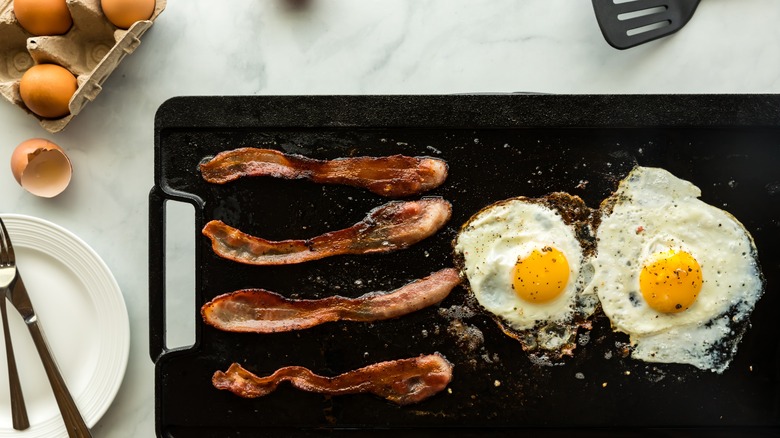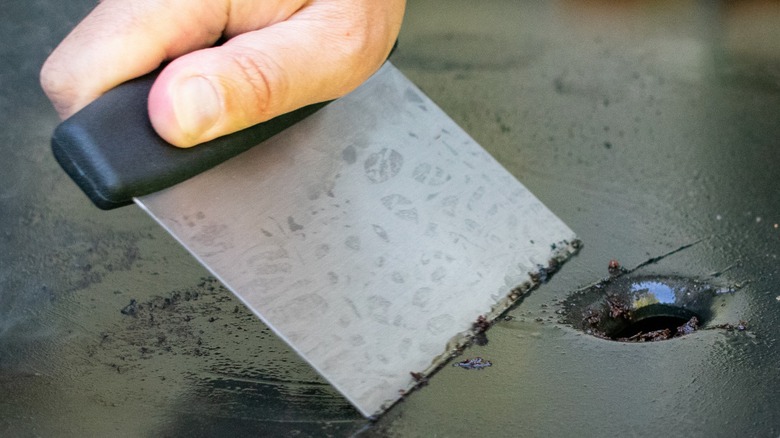What To Know Before Cleaning The Stuck-On Food Bits Off Your Griddle
Griddles, whether nestled in the kitchen or used as an outside BBQ companion, are an indispensable tool for many food lovers. From sizzling steaks to crisp pancakes, the convenient griddle helps in achieving that perfect sear and flavor, while allowing you the flexibility of cooking lots of foods simultaneously. However, cleaning it afterward is not always so delightful. Those stubborn, stuck-on food bits can make even the most patient home cook groan in frustration.
Tempting as it may be to reach for that industrial-strength cleaner or that abrasive steel wool, resist the urge. Before cleaning those food remnants, understand that cleaning your griddle isn't just about hygiene, but also about preserving the integrity of the griddle's surface. And when you use abrasive chemicals or rough cleaning materials, you risk damaging this surface. Scratches can become potential weak points, leading to quicker wear and tear or even causing the surface to chip.
Moreover, chemicals could leave behind residues, which is not something you'd want mingling with your food during the next cooking session. Therefore, finding a balance between effective cleaning and maintaining the griddle's longevity is crucial. The answer lies in understanding the material of your griddle and choosing cleaning methods that respect its unique characteristics.
Material-specific cleaning tips for your griddle
No matter the type of griddle you have — stovetop, built-in range top, electric, or outdoor griddle — the material it's made of determines the ideal cleaning process. For instance, when cleaning a cast iron griddle, avoid soaking it in water. Instead, use hot water, and a soft scrub brush or a soft scoring pad. If it's very dirty, add some mild dish soap. After cleaning, always dry it completely to avoid rust.
Stainless steel griddles are durable but can still be prone to scratches. When cleaning your built-in griddle, do so when it's still hot. Use a flat metal spatula to first scrap off food debris, but keep it flat against the griddle top to prevent scratching. Next, pour water on the hot griddle, let it bubble as it loosens the remaining stuck-on food, then clean it by wiping it down with a folded paper towel held using the spatula.
This process also applies to outdoor griddles, most of which are made of a combination of materials including steel. The only additional step at the end is coating it with cooking oil to protect it from the elements. Lastly, non-stick griddles need the gentlest care to maintain the non-stick layer. Simply wipe them with a soft sponge dipped in warm soapy water then rinse.
Ultimately, understanding the material of your griddle and adopting a gentle cleaning approach is crucial in ensuring the cooking surface remains in top-notch condition.

